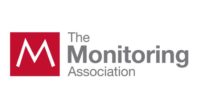The Monitoring Association’s (TMA) OPS-TECH conference began Nov. 9, covering topics on operations management.
Taking place virtually on the Whova app, the operations portion took place over the course of four days, featuring informational sessions, engagement activities, virtual vendor booths and a virtual lunch break.
“This meeting is one example of what I love about TMA. We come together to share the best of professional monitoring practices to help each other advance,” said TMA President Don Young.
TMA member Kirk MacDowell of MacGuard Security Advisors facilitated the meeting’s opening session, “Response to Professional Monitoring During a Pandemic.” MacDowell was joined by panelists Stephen Harper, president of Dispatch Center; Michele Levcik, asset protection manager, security operations center at Wegmans Food Markets; and Steve Meyer, vice president of operations and administration at EMERgency 24 Inc. Each presented their company’s pandemic response and transitional experiences related to work-from home, use of new technologies, employee training and more.
Levcik touched on how Wegman’s has adapted, with its security operations center based out of Rochester, N.Y. Both safety and keeping an open line for communication were concerns when the pandemic occurred.
“One of the things that we adapted to first was, how are we going to be separate, but still work together?” she said.
During the second day of the conference in a session titled, “Alarm Handling Protocols: Best and Worst (Standards Review),” panelists Anita Ostrowski, Vector Security; Nick Bearb, Acadian Monitoring Service; and JoeAllen Gentry, Washington Alarm discussed intrusion, fire and PERS alarm response for residential and commercial systems.
The conversation shifted to how The Monitoring Association has changed over time, including reaching out to customers via text, the amount of technology coming into the central station and keeping up with technology cycles.
“Every new system needs to be a combination of IP and radio of some type,” Gentry said.
Day three featured a session covering Public Private Partnerships (P3). Titled “How to Create Relationships with Public Safety Organizations,” retired Chief of Police Frank Fernandez relayed five key points to attendees for establishing and growing collaborative relationships with local public safety professionals, including giving informational presentations on monitoring to chiefs of police to give insights into how monitoring professionals can help police officers, and vice versa.
MacDowell joined Fernandez and Joey Rao Russell, Kimberlite, for the presentation and discussion. Fernandez emphasized the “extreme” importance of a relationship between local public safety professionals.
“They need you as much as you need them,” Fernandez said.
TMA Education Committee Co-Chairs John Brady, TRG Associates, and Brandon Niles, Acadian Monitoring Services, led an interactive discussion with meeting attendees on the topic of “moving forward” in a Zoom call of the same name. MacDowell joined Brady and Niles in leading the conversation. As the panelists and attendees gave thought to their business operations beyond the pandemic, many expressed their desire to remain committed to the new levels of engagement that had been established with their company leaders, teams, customers, associations and UL.
MacDowell referred to the new closeness as a type of “intimacy” or heightened concern for and interest in others. Niles shared how his company leaders had reached out every day during the pandemic and shared his appreciation for what he called “over-communicating and caring.”
The technology portion of the conference takes place Nov. 17-18 and includes keynotes from Brian Cyprian from the FBI and Scott Stanton of Cisco. Sessions cover the future of work, a discussion on the state of the industry and desktop as a service for the remote workforce.
All sessions are available to access online on the OPS-TECH Whova page.
For more information, visit The Monitoring Association’s website.



